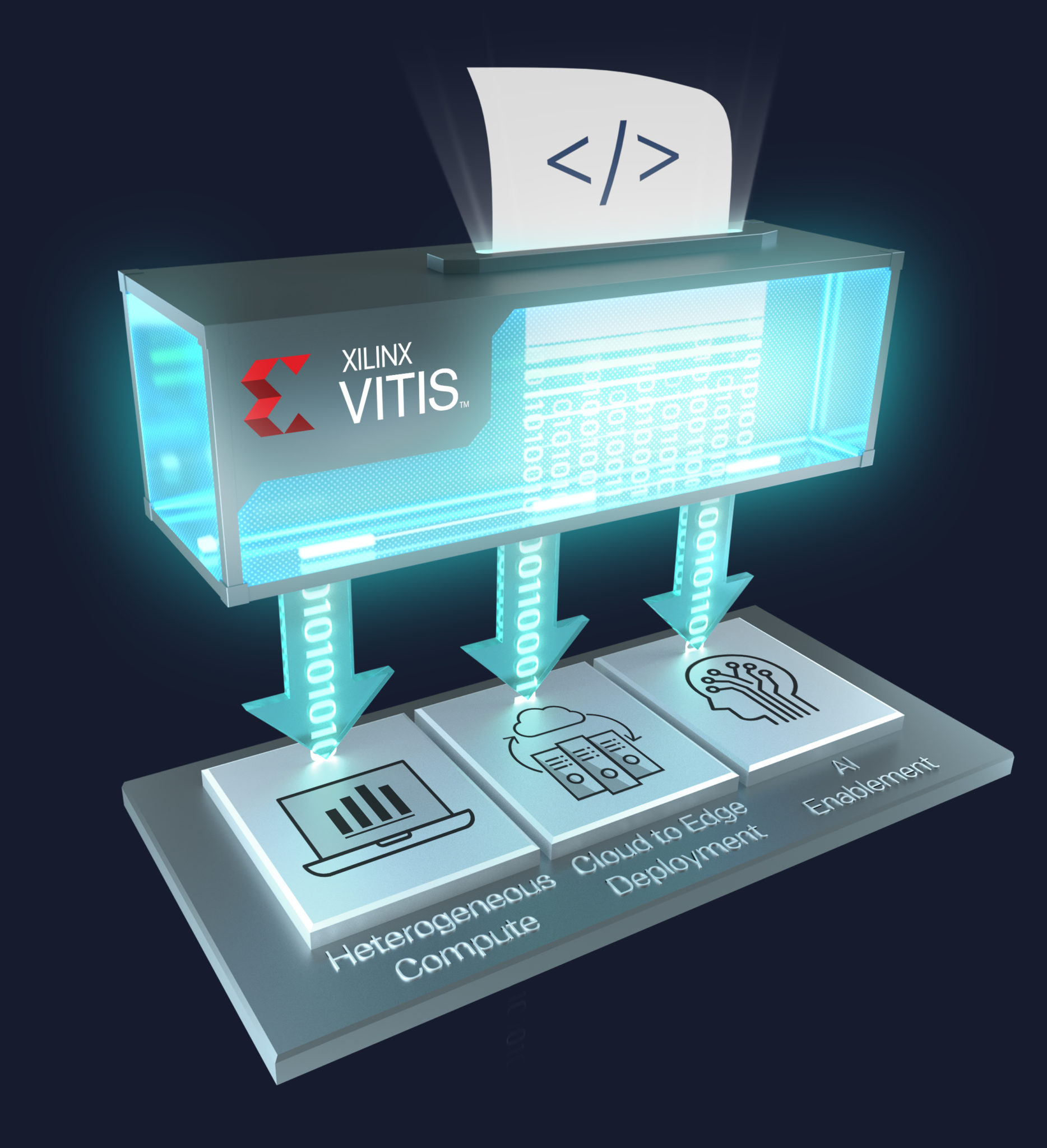
Xilinx, like everyone else shipping Field Programmable Gate Arrays (FPGAs), is trying to make the custom silicon processors and the system-on-chip (SoC) architectures that deploy them easier to programme. Today the company said it has taken a big step closer to making that reality, with the launch of its new Vitis software platform and accompanying open source libraries (now available for download, free of charge).
To understand why this particular release matters – and why we’re giving the company free airtime – it’s necessary to take a few steps backward.
FPGAs Are Going to Be Increasingly Big News
As cloud hyperscalers and other Big Data crunchers seek to squeeze ever-more firepower from their silicon, FPGAs have an increasingly crucial role to play.
With everyone from banks to pharmaceutical companies looking to run (evolving) AI algorithms over large datasets, FPGAs – which contain an array of programmable logic blocks, and a hierarchy of reconfigurable interconnects – let users flexibly accelerate such efforts; they can be pre-trained by cloud providers, or fine-tuned by anyone who can get their hands on them to run particular workloads.
They can, in short, give those needing some heavy compute power the kind of flexible oomph that will increasingly be welcomed by anyone competing in a computational arms race (and few industries will be immune as AI gets more widely deployed); something will matter more as Moore’s Law grinds to a seemingly inevitable halt.
FPGA Programming Ain’t Easy…
Doing so, however, is long been a painful, frustrating process for all but a small cohort of patient specialists with a love of Verilog*, the hardware description language.
FPGA sellers like Intel have been stepping up their efforts to make it easier to programme them as a result, in a move somewhat analogous to the efforts of Big Iron vendors to remove the constant need for dedicated COBOL programmers.
Intel, for example, continues to work on its “One API” project: a programming model and portfolio of developer tools that aim to make it easier to map software to hardware. (Intel will be furnishing an update on that project later this month).
See also: Intel Ramps Up FPGA Battle with Xilinx, Claims 40% Performance Improvements
Xilinx’s Vitis is its own push in that direction. Teasing the release on November 1, Xilinx said it had taken “five years and a total of 1,000 man years in the making”.
The toolkit automatically tailors the Xilinx hardware architecture to the software or algorithmic code (being used with it) without the need for hardware expertise, Xilinx claims: “Rather than imposing a proprietary development environment, the Vitis platform plugs into common software developer tools and utilizes a rich set of optimized open source libraries, enabling developers to focus on their algorithms.”
This allows developers to use application level code like C++ to talk to Vitis libraries that are underpinning the algorithms running on your uniquely configured FGPA.

Data science is, arguably, never easy and hardware programming to make it more effective just adds a layer of pain. Xilinx is trying to lessen this with a “specialized development environment for accelerating AI inference on Xilinx Embedded platforms, Alveo Accelerator cards, or on the FPGA-instances in the cloud.
“Vitis AI supports industry’s leading deep learning frameworks like Tensorflow and Caffe, and offers comprehensive APIs to prune, quantize, optimize, and compile your trained networks to achieve the highest AI inference performance.”
See also: If Moore’s Law’s Dead, What Now for Silicon Valley? The CEOs of Arm, Micron, Xilinx Have their Say
“With exponentially increasing compute needs, engineers and scientists are often limited by the fixed nature of silicon,” said Victor Peng, Xilinx’s president and CEO.
“Xilinx has created a singular environment that enables programmers and engineers from all disciplines to co-develop and optimize both their hardware and software, using the tools and frameworks they already know and understand.
“This means that they can adapt their hardware architecture to their application without the need for new silicon.”
For that to happen, some serious cultural shifts also need to happen at a lot of companies, but expect in coming years to start seeing a lot more hardware and software people working closely together…
*Despite the comparative rarity of this skillset and a slow but steady rise of interest in FGPAs, jobs in the UK continue to underpay: this “Senior FPGA Design Engineer” role in London offers £50,000 for example. We say: anyone developing “high level and detailed designs for FPGA-based systems” using their VHDL and verilog development and C/C++ programming on Linux experience deserves more than that…






